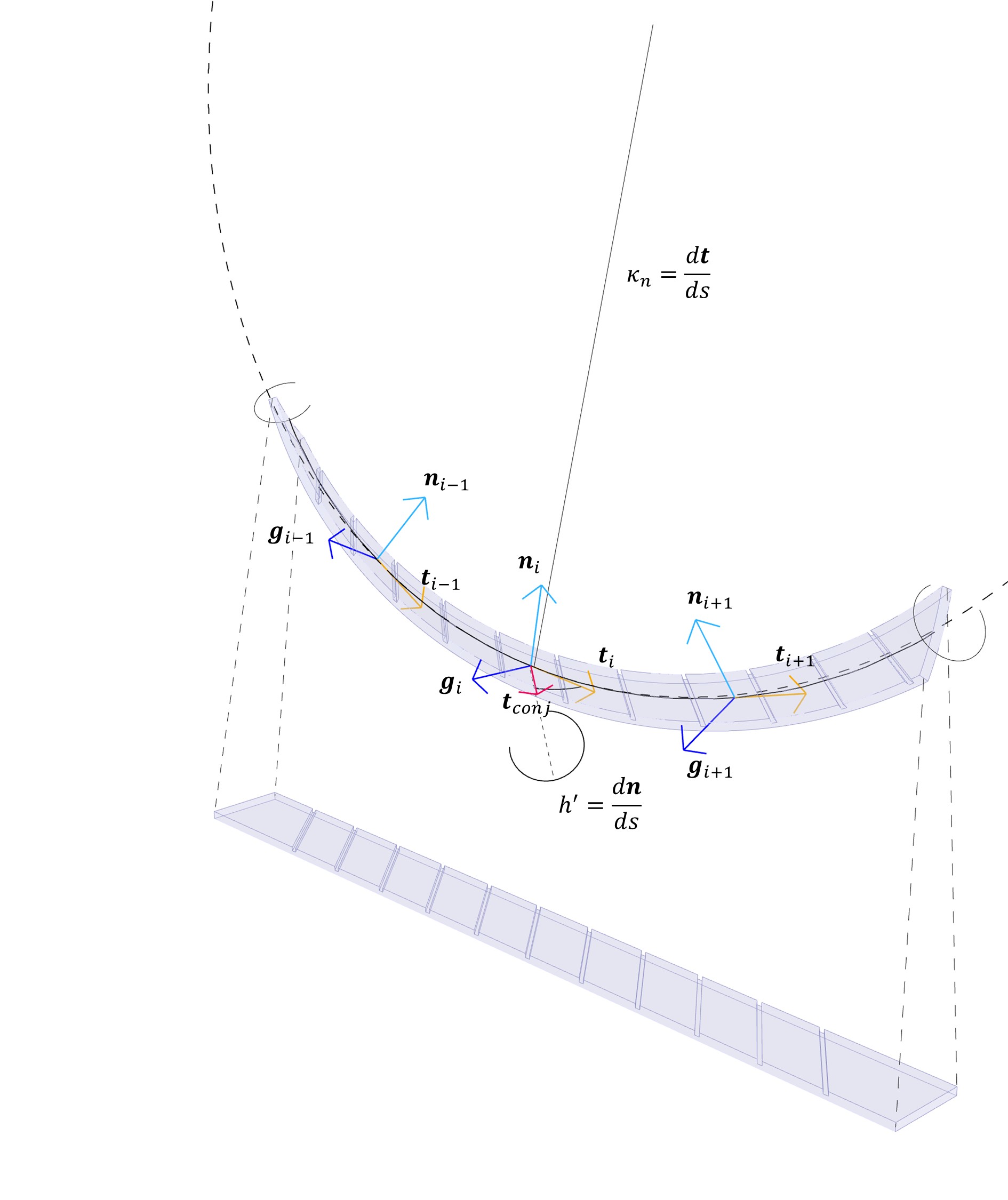Controlled elastic deformations
Our research investigates the mechanical behavior and controlled elastic deformation of plate strips, leveraging large elastic deformations as a form-giving strategy for lightweight structures. When a thin strip is elastically deformed, it naturally assumes a shape that minimizes its elastic energy, known as the elastica. However, deviation from this minimal energy shape requires additional interventions, such as modifying material properties to guide the deformation into a desired target form.
In architectural applications however, designers often influence the geometry by either constraining deformation through the interaction and coupling of multiple members or by imposing a desired form using mechanical fasteners and falsework. However, these approaches often lead to geometrical discrepancies from the intended design shape, since additional internal residual stresses, causing spring-back effects, arise when forcing an elastic element to follow another path than that of minimal elastic energy
In our study, we approach the inverse problem of controlled elastic deformation by manipulating the stiffness distribution for specific targeted equilibrium modes. Specifically, we introduce novel methods that translates stiffness variations into a series of local cuts, which guide the strip to deform into a pre-designed shape. By strategically introducing these modifications, we aim to control the deformation path and mitigate undesired geometric deviations.
 Our methodology relies on numerical simulations to predict and optimize deformation behaviors. Through computational modelling and prototyping we investigate how a predefined equilibrium shape can be achieved through local manipulation and the influence of different stiffness distributions and cut patterns. This research contributes to the broader understanding of elastic deformation control and offers new possibilities for precision-driven structural design in architecture and structural engineering.
Our methodology relies on numerical simulations to predict and optimize deformation behaviors. Through computational modelling and prototyping we investigate how a predefined equilibrium shape can be achieved through local manipulation and the influence of different stiffness distributions and cut patterns. This research contributes to the broader understanding of elastic deformation control and offers new possibilities for precision-driven structural design in architecture and structural engineering.
Contact:
David Andersson-Largueche
Riccardo La Magna
Projects:
The ReGrow Timber Canopy
Komorebi
Publications:
The ReGrow Timber Canopy

